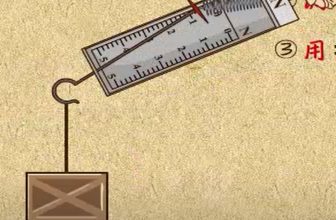In the world of physics and engineering, springs play a crucial role in various applications, from everyday objects like door hinges to complex systems like suspension systems in vehicles. The fundamental property that characterizes the behavior of a spring is its spring constant, often denoted as “k.” The spring constant, a measure of a spring’s stiffness, is essential for understanding the mechanical response of a spring to applied forces. In this article, we will delve into the concept of the spring constant and explore its dimensional formula.

Understanding the Spring Constant
The spring constant, or stiffness coefficient, quantifies how resistant a spring is to deformation when a force is applied to it. It essentially tells us how much force is required to extend or compress a spring by a certain amount. The spring constant is a critical parameter in Hooke’s Law, which states that the force exerted on a spring is directly proportional to the displacement from its equilibrium position.
Mathematically, Hooke’s Law is expressed as:
F = -k * x
Where:
- F represents the force applied to the spring.
- k is the spring constant (stiffness) of the spring.
- x denotes the displacement from the spring’s equilibrium position.
The Spring Constant Dimensional Formula
To understand the dimensional formula of the spring constant, we can break down the components of Hooke’s Law. The dimensions of force (F) are represented in terms of mass (M), length (L), and time (T), commonly written as [MLT^-2]. The displacement (x) is measured in units of length, giving it dimensions of [L].
Now, if we rearrange Hooke’s Law to solve for the spring constant (k), we get:
k = -F / x
To find the dimensional formula for k, we substitute the dimensions of force and displacement:
k = -[MLT^-2] / [L]
Next, we simplify the expression:
k = [MLT^-2] / [L]
By dividing [MLT^-2] by [L], we get the dimensional formula for the spring constant (k):
[M][LT^-2][L^-1]
Simplifying further:
k = [MLT^-2L^-1]
Interpreting the Dimensions
The dimensional formula of the spring constant, [MLT^-2L^-1], can be understood as follows:
- [M]: Represents mass, as the spring constant depends on the mass of the spring material.
- [L]: Denotes length, as the spring constant is a measure of the stiffness over a certain length.
- [T^-2]: Stands for time squared, as it accounts for the time-dependent nature of force and displacement.
In essence, the spring constant’s dimensional formula encompasses the basic physical quantities that play a role in defining the stiffness of a spring. It highlights the interplay between mass, length, and time in the context of a spring’s response to an applied force.
Applications and Significance
Understanding the dimensional formula of the spring constant is not merely an exercise in physics and mathematics; it has practical implications in a wide range of applications. Engineers and designers use this knowledge to select the appropriate springs for specific purposes, ensuring that the springs can support the required loads without deformation or damage. In fields like automotive engineering, aerospace, and civil engineering, the spring constant is a critical parameter in designing resilient and efficient systems.
Conclusion
The spring constant, a fundamental property of springs, is pivotal in understanding how these mechanical components respond to external forces. By unraveling the dimensional formula of the spring constant, we gain insights into the physical quantities that influence a spring’s stiffness. This knowledge is invaluable for engineers and scientists when designing systems that rely on the mechanical properties of springs, making it a key aspect of the world of physics and engineering.









